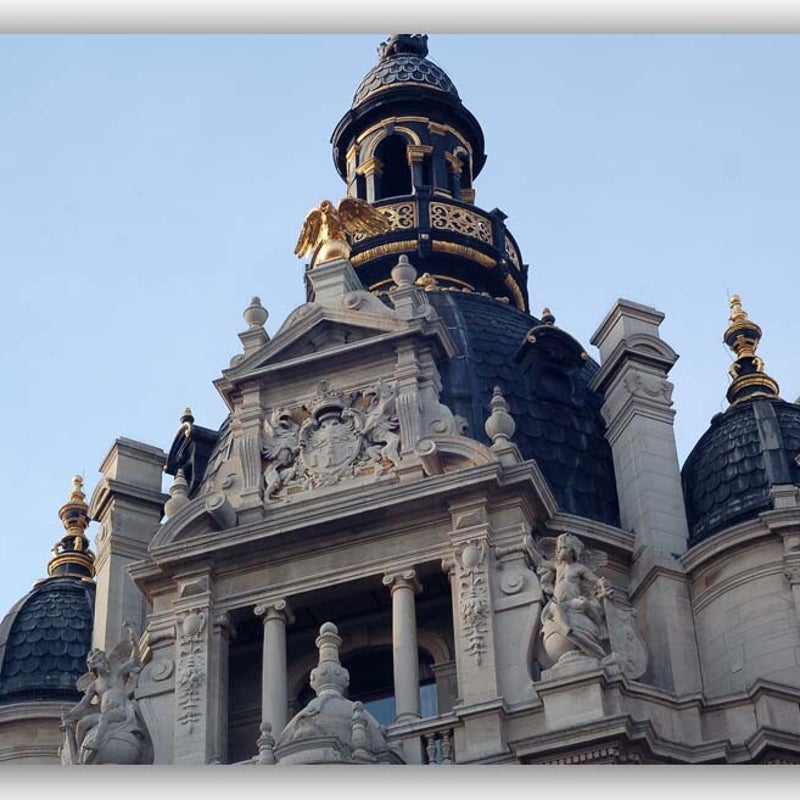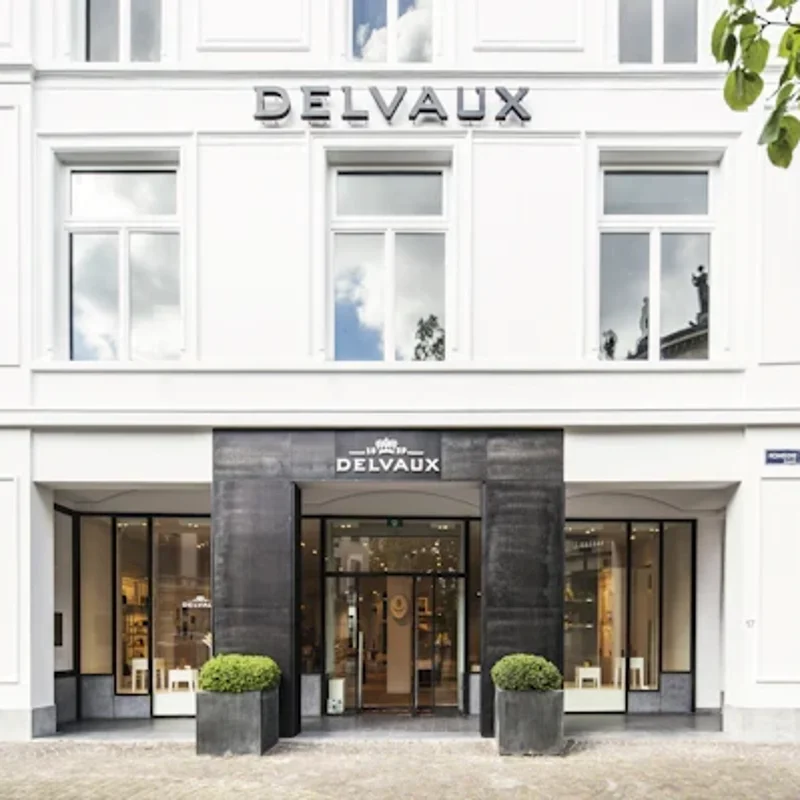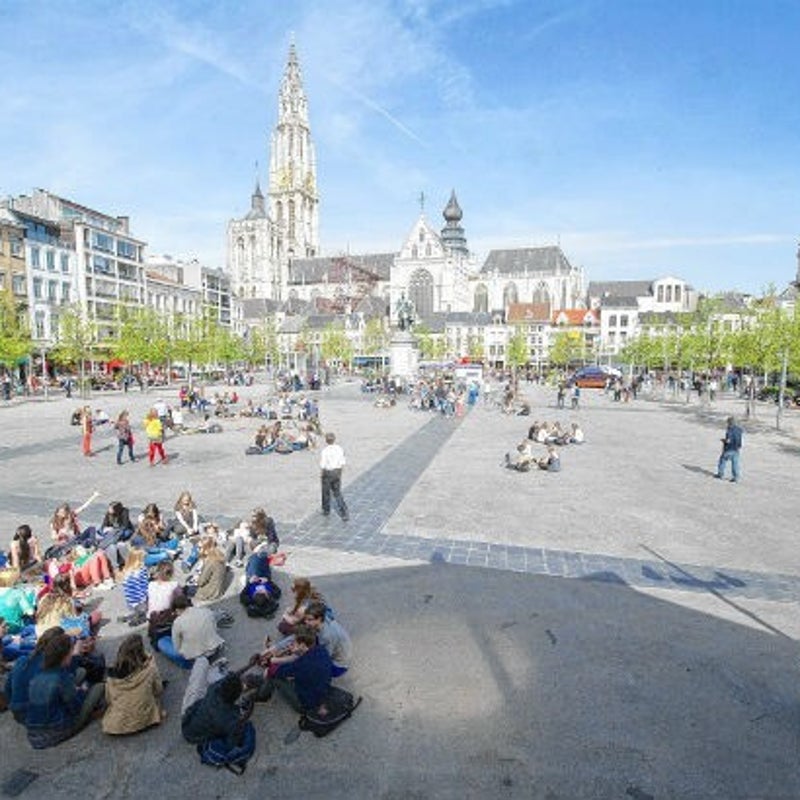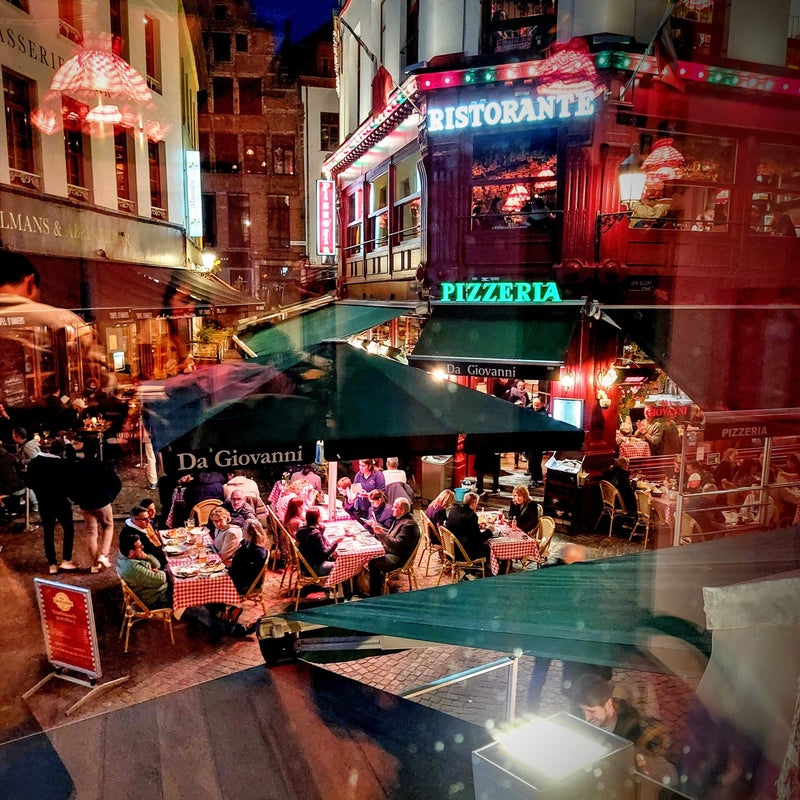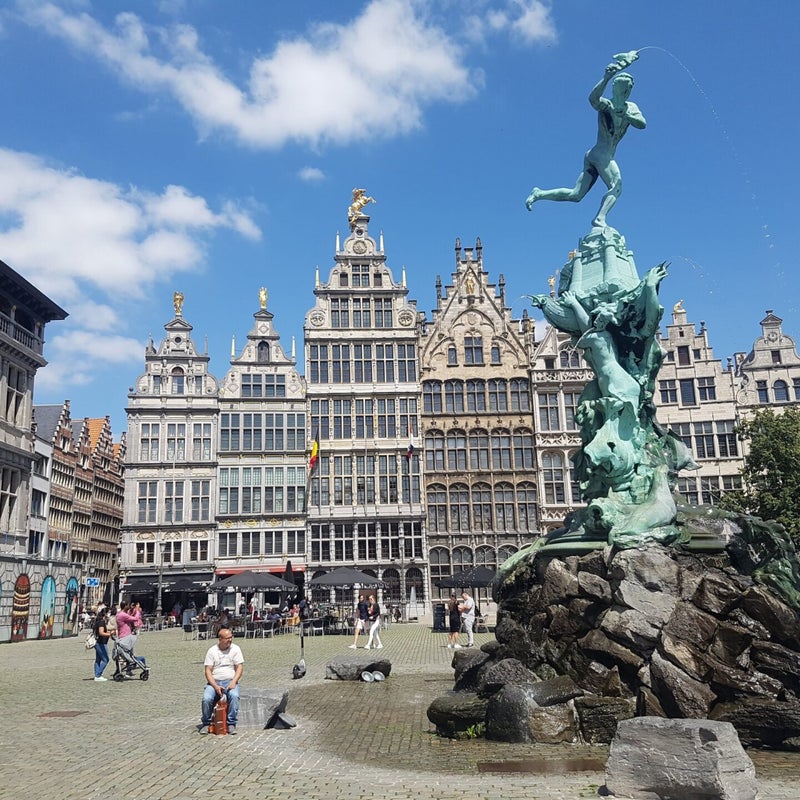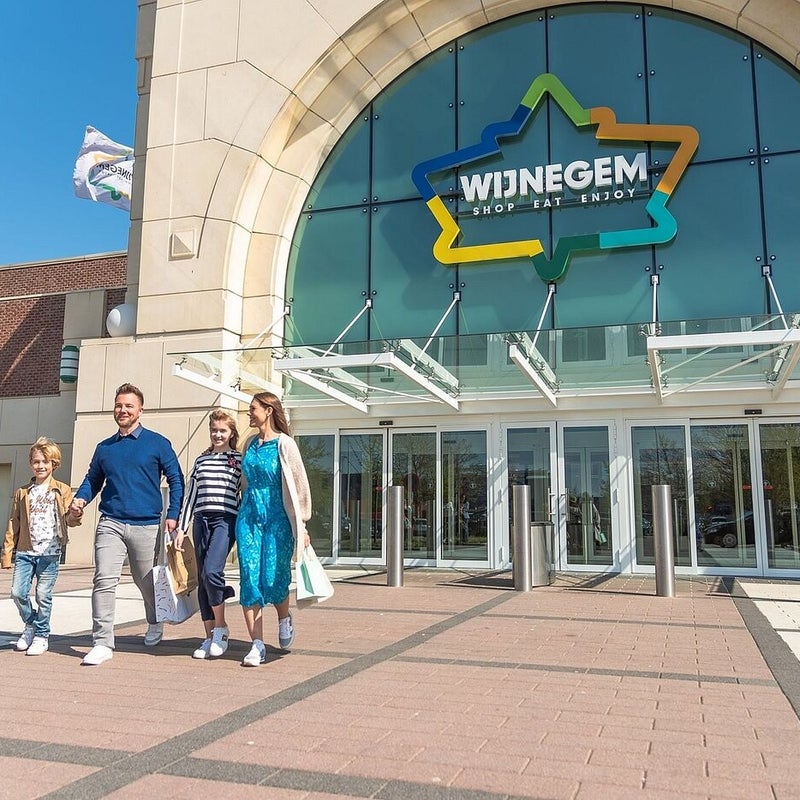
Sightseeing Antwerp
Wondering about the touristic hotspots the city of Antwerp has to offer? Are you planning to extend your trip to explore the beautiful city of Antwerp?
Antwerp has plenty to offer, probably too much to summarize on a single page. We’ll share some of the highlights along the main axis running through the city centre and add some more remote points of interest. The axis can be done walking. The others can be done by driving or using public transportation.
Stay tuned. We’ll drop some of the best sightseeing spots in the vicinity on this page. There’s still more to be added….
To get started we need a starting point, let’s say Antwerp Central Station, because this is most likely the place you’ll end up going to the city centre.
Antwerp Central Station
What is unanimously known as the most beautiful train station in Europe.
Located on “Koningin Astridplein” in the heart of the city. The station as it is today was build in several stages. Building of the main building started in 1895.
Definitely worth a visit. In the main building you’ll find a Starbucks and several other shops in the gallery on ground level, including a supermarket.
The ideal starting point for the exploration of a city that has a rich history and culture.
Axis Central Station - Cathedral
De Keyserlei - Diamond Quarter
Exiting Antwerp central station at the main entrance head into “De Keyserlei”. This street is the entryway to the historic city center. To the left you’ll find the Antwerp diamond quarter. Here is the epicenter of diamond industry. A lot of jewelers are found here. Want to impress your girl? Diamonds are a girl’s best friend and you will find good deals here. De Keyserlei itself harbors many restaurants and bars. From fastfood to Bier Central (home hundreds of Belgian beers) over to Takumi Tonkotsu Ramen en Hawaiian Poké Bowl. If you’re looking for a place to eat or enjoy a variety of Belgian craft beers, this is the place to be.
Opera plein
Next stop, at the end of “De Keyserlei” is “Operaplein”
Recently renovated (2020) and redesigned by Spanish architect Manuel De Solà-Morales harbors the historic Opera building, build between 1904 & 1907.
Beneath, with the red dome as its main entrance, lies a three level metro complex, a parking lot and traffic tunnels.
We continue our journey across “Operaplein” walking through “Teniersplaats” and “Leysstraat” towards “Meir”. You’ll find some beautiful historical buildings and a statue of David Teniers. It’s the entrance gate to the main shopping street “Meir”. Underneath this street runs a subway that can take you to the other end where the cathedral is in a few minutes. You can get there from central station or “Operaplein” subway station (the red dome)
Arrived at “Meir”, let the local pace guide you. Besides the obvious, shopping, a few other things can be found along the way
A few hundred meters, on the left, you’ll notice another historic building. Called “Stadsfeestzaal”. This 20th century building harbors shops and a grand cafè. It’s definitely worth taking a look inside.
Little side quest
A little bit further, and also on your left side, you’ll find a square with a fountain and an eagle statue. This is “Wapper”. It’s worth your time to traverse the square. You’ll find “Rubenshuis”, the national museum dedicated to Peter Paul Rubens.
Rubenshuis.
It dates back to 1610 and was build as a house and atelier for the famous painter.
You can visit it throughout the year.
At the back end of the square you’ll walk into Grand Cafe Horta. This building contains the metal arches of the demolished “Maison Du Peuple” that was designed by Victor Horta. Definitely worth a visit for coffee or lunch.
Back to “Meir”
Once back you’ll notice there’s another majestic building on the corner of the square “Wapper”. It’s an 18th century palace and is part of the Belgian royal patrimony
A little bit further along the way you’ll see a tall building in art-deco style. It’s called “Boerentoren”. It was the tallest skyscraper of Europe at the time of its construction in 1931. It has 26 floors and is 95,75m tall.

Before walking towards it, first turn left at “Meirbrug” towards “Huidevettersstraat”. There are a few more shops to find here. If you turn to the left further on, to “Komedieplaats” you’ll find some high end stores like Delvaux and Chanel (Schuttershofstraat). You’ll also find the “Bourla” theatre.
Back at “Meirbrug” continue towards the skyscraper and keep it at your right hand side. You are now on “Schoenmarkt” and almost at “Groenplaats” and the cathedral. If you keep walking they should appear on your right.
Arrived At “Groenplaats” in the back you’ll notice the Cathedral. On the right side you’ll unveil the protected facade of the Antwerp Hilton and a statue of Peter Paul Rubens. On the sides of this squares are lots of restaurants and bars to be found. If you’ve absorbed the majestic beauty proceed to the left back corner of the square.
Jan Blommestraat. Now you’re entering a very ancient part of Antwerp. First thing you can’t walk by unnoticed is the famous Da Giovannis restaurant. Although this Italien restaurant has nothing to do with Antwerp, it’s loved by many a tourist as wel as by the Antwerp inhabitants (Antwerpenaren). Further to the right the cathedral facade will appear. There’s a scenery about how it was build. In front of the entrance “Nello & Patrache lay asleep.
A few meters further is Quinten Matsijs’ well. Quinten was a blacksmith.When he arrived in Antwerp he fell in love with Catharina Heyns, the daughter of an artistic painter. Her father wasn’t set up with the idea of his daughter marrying a blacksmith. So Quinten decided to teach how to paint. He painted a realistic looking fly on one of the paintings of Catharina’s father. When he noticed, he stated that the painter of the fly could marry his daughter.
The chiseled text on the edge of the well states “The forging on this well was forged by Quinten Matsijs. Love turned the blacksmith into a painter.
It is one of the many urban myths and legends about Antwerp and its historical figures. They are narrated statements that emphasize the importance of the city of Antwerp in the wider region throughout history.

A little bit to the right, but still forward, walk into “Maalderijstraat”. It’s a short street, ending at yet another square. Here you’ll find the city hall on your left. Right in front of it is another statue of an important urban legend. Facing city hall, on the right back is a cafe “Den Engel”. One of the most famous, iconic and authentic cafes of Antwerp. It’s very affordable and something you must have done while in Antwerp. If you’re into Belgian beer ask for a”Bolleke”, one of the oldest beers of the oldest city brewery.
You can visit the very beautiful 16th century city hall. It’s free. The statue in front depicts Silvius Brabo, a Roman military who chopped off the hand of the giant Druon Antigoon, and threw it in the river Scaldis. The hand can be found on the city shield and is symbol of the city. At bakeries “Antwerpse handjes” can be bought. Very tasty cookies in the shape of hands. Chocolate versions can also be found.
If you go left while facing city hall and then turn right to “Suikerrui” you’ll walk straight into the river Scaldis. This river is of very large importance to the city history and is the reason of the city’s existence and growth.
Very beautiful walks can be made on the boardwalk which is a mixture of old and new areas.

Walking towards the river you’ll notice an architectural marvel slight to your left. It’s called “RAS”. A very nice restaurant with breathtaking views over the river.
Slightly to your right is a castle “Het Steen”. This castle was build between 1200 and 1225. Today it functions as a museum about the city history. If you want to find out about the city’s history, this is the place to visit.

Keeping the river on your right hand side you’ll encounter another odd building on your left. It’s the “St. Annatunnel” entrance building. The tunnel connects riverbanks by foot or cycle. It was build in 1931 and is 572 meters long and 32 meters beneath ground. Both sides have an elevator for 40 persons and two escalators. The wooden escalators were a technological innovation for the time period. With its unique design in art deco style it’s definitely worth the visit.
We’ve come a long way, but there’s one final thing to see before I send you back into the opposite direction. Facing the tunnel building, with your back to the river, walk into the street at the left “Zand” and follow it till the end. At the right hand corner there is a cafe called “Beveren”, which by the way is the name of another city. This cafe is one of the other iconic places in Antwerp. Inside is a rare 1930’s Decap organ. It’s complimentary to the rest of the authentic interior.
This concludes our historic city walk. Of course there’s lots more to be seen, even on this route. Don’t hold yourself back when curiosity kicks in.
Other points of interest
Next locations are all easily reachable by public transportation. We recommend you to use Google maps to reach them.
Shopping
Want to go shopping indoors? Wijnegem shopping is the place to be. With 250 shops you can go all day. Not open on holidays and Sundays.
















